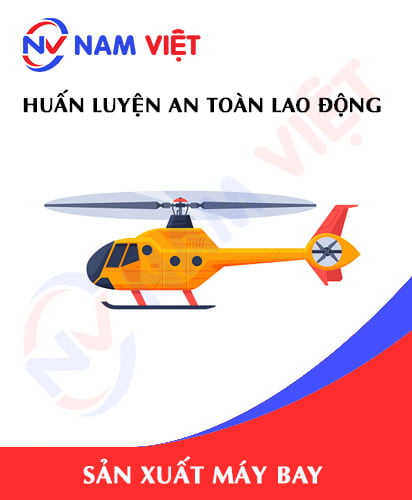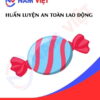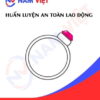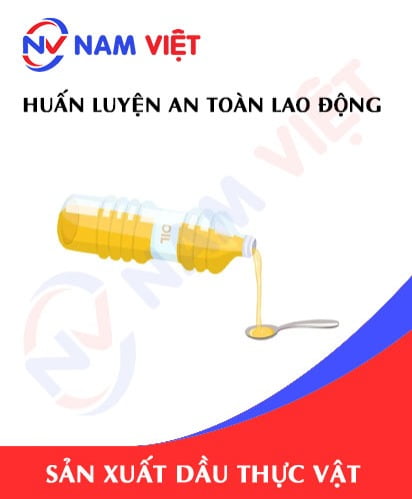Occupational Safety Training for Aircraft Manufacturing
99,000 ₫
Note: The price above is calculated per person and may vary depending on the number of trainees participating in the course and market fluctuations. For more accurate pricing support, please refer to the quotation list or contact our consultants directly.
Occupational safety is an important issue in aircraft manufacturing factories and needs to be addressed promptly to ensure the health and safety of workers, enhancing the reputation of businesses. The Occupational Safety Training course is one of the effective solutions to raise awareness about preventing workplace accidents for workers involved in aircraft production.
Table of Contents
Toggle1. Overview of Aircraft
a. What is an aircraft?
- An aircraft is a vehicle that can fly in the air by creating lift with its wings or by pushing air down with jet engines. Aircraft are designed to transport goods, passengers, or perform military missions. Aircraft can fly at different altitudes, depending on the type of aircraft and the purpose of use. Common types of aircraft include passenger aircraft, cargo aircraft, helicopters, training aircraft, and fighter jets.
- Currently, Vietnam does not have the capacity to manufacture aircraft with modern and complex technology. However, Vietnam has some manufacturers of components, spare parts, and equipment for aircraft such as cabin doors and cabinets, flight control system accessories, electronic and precision mechanical equipment. In addition, Vietnam is also cooperating with many international partners to learn aircraft manufacturing techniques and technology, with the aim of developing the aerospace industry in the future.
- In Vietnam, there are currently a number of companies and units that manufacture and assemble small aircraft, such as training aircraft, sports aircraft, and unmanned aerial vehicles (UAVs). However, these products mainly meet domestic demand and are exported on a small scale.

b. Types of machinery for aircraft manufacturing
Aircraft manufacturing is a complex process that requires a lot of equipment, machinery, and specialized techniques. Below are some of the essential types of machinery and equipment in the aircraft manufacturing process:
- Precision machining tools: used for machining precise parts, including milling machines, lathes, grinding machines, drilling machines,…
- Metal processing equipment: for cutting, drilling, and stamping metal parts such as fuselage and wing components.
- Metal forming machines: used to create the basic shape of metal parts.
- Molding and shaping machines: used to cast plastic parts in aircraft.
- Stamping equipment: to create molds for casting metal or plastic.
- Quality inspection equipment: to check the accuracy and quality of parts and components during the aircraft manufacturing process.
- Model aircraft: used to test and inspect the design before manufacturing the actual aircraft.
- Research and development equipment: for researching and developing new technologies in aircraft manufacturing.

c. Famous aircraft manufacturing companies in the world
Here are some of the world’s most famous aircraft manufacturing companies:
- Boeing (USA): A leading company in the manufacturing of commercial and military aircraft. Boeing has manufactured famous aircraft such as the Boeing 747, 777 and 787 Dreamliner.
- Airbus (Europe): A competitor of Boeing and also one of the leading companies in the aircraft manufacturing industry. Airbus has manufactured famous aircraft such as the Airbus A320, A330 and A380.
- Bombardier (Canada): This aircraft manufacturing company is famous for its commercial aircraft lines such as the Bombardier CRJ and Bombardier Q Series.
- Embraer (Brazil): One of the leading companies manufacturing small and medium-sized aircraft in the world. Embraer has manufactured famous aircraft such as the Embraer E-Jets and Embraer Legacy.
- COMAC (China): A company specializing in aircraft manufacturing in China and has manufactured aircraft such as the ARJ21 and C919.
- Sukhoi (Russia): A company specializing in military aircraft manufacturing and has manufactured famous aircraft such as the Sukhoi Su-27 and Su-35.
- Mitsubishi Heavy Industries (Japan): A Japanese aircraft manufacturing company that has manufactured aircraft such as the Mitsubishi Regional Jet.
- Embry-Riddle Aeronautical University (USA): Not an aircraft manufacturing company, but Embry-Riddle University is one of the leading schools in the aviation industry and produces many leading experts for this industry.
d. Specific jobs in an aircraft manufacturing factory
Group 1
- Executive director, deputy executive director, and department head in an aircraft manufacturing factory.
Group 2
- Safety officer: manages safety in the factory, designs safety procedures, and supervises and urges employees to comply with safe work procedures.
Group 3
- Metal fabrication: Manufacturers use laser cutters, CNC lathes, and milling machines to fabricate metal parts of the aircraft, including the fuselage, wings, and many other components.
- Composite fabrication: Composite is a material used to fabricate aircraft components such as the nose, wings, and tail of the aircraft. Composite manufacturing techniques include using layers of fiberglass or carbon fiber coated with plastic and heat-pressed to form high-performance components.
- Assembly: The actual aircraft are assembled by hand. The different parts are joined together to form a complete aircraft.
- Quality inspection: Aircraft components are quality inspected to ensure that they meet safety standards and customer requirements.
- Spray painting: After the aircraft is assembled, it is spray-painted to create a glossy surface and meet customer standards.
- Final inspection: Finally, the entire aircraft is inspected again to ensure that it meets all safety and quality standards before being shipped to the customer.
Group 4
- Office, service, sales, and marketing jobs.
- Production management, quality management, human resource management, material management, and financial accounting management.
- Research and development of new products.
- Design: Design engineers use CAD software to design and develop aircraft components, including engines, wings, fuselages, cockpits, and electronic systems.

e. Common types of aircraft in the world
Here are some common types of aircraft in the world:
- Commercial aircraft: Includes passenger aircraft such as the Boeing 737, Airbus A320, Boeing 777, and Airbus A380. These types of aircraft are commonly used in the civil aviation industry to transport passengers and cargo on international and domestic routes.
- Military aircraft: Includes fighter aircraft such as the F-16 Fighting Falcon, F-35 Lightning II, Su-35 Flanker, and J-20 Mighty Dragon. These types of aircraft are used in military operations such as interceptors, bombers, and reconnaissance.
- Cargo aircraft: Includes cargo aircraft such as the Boeing C-17 Globemaster III and Lockheed Martin C-130 Hercules. These types of aircraft are used to transport military and civilian goods.
- Racing aircraft: Includes racing aircraft such as the Red Bull Air Race World Series and Reno Air Races. These types of aircraft are designed for racing and competing in air races.
- Exploration aircraft: Includes exploration aircraft such as the Northrop Grumman RQ-4 Global Hawk and General Atomics MQ-9 Reaper. These types of aircraft are used in exploration, surveillance, and intelligence activities.
- Jet aircraft: Includes jet aircraft such as the Concorde and Tupolev Tu-144. These types of aircraft are capable of flying at very high speeds and are used in supersonic flights.
- Training aircraft: Includes training aircraft such as the Pilatus PC-9, Beechcraft T-6 Texan, and Yakovlev Yak-130. These types of aircraft are used to train pilots and instructors.
2. Overview of the occupational safety training course for aircraft manufacturing
Within the scope of this article, we focus on issues related to Group 3, because Group 3 is the group directly involved in the manufacturing process, bearing the highest risk of occupational safety. Refer to other groups here
a. What is Group 3 occupational safety training?
- Occupational safety training for Group 3 are training sessions that equip employees with awareness on how to prevent workplace accidents.
- The occupational safety training course will help employees recognize and avoid dangers, and limit the risks of workplace accidents while working.
b. Training duration
First-time safety training duration
- Total training duration is at least 24 hours, including examination time.
- 8 hours of theoretical study on the system of policies and laws on occupational safety and health
- 8 hours of theoretical study on basic knowledge of occupational safety and health
- 4 hours of theoretical study on specialized training content
- 2 hours of practical study on specialized training content
- 2 hours of theoretical examination at the end of the training course
The safety training center will distribute the time into many training sessions depending on the time arrangement for the employees. But usually, there will be 6 training sessions, the course will take place over 3 days, on the condition that the manufacturing business can arrange continuous study time.
Periodic safety training duration
- Before the occupational safety card expires, if the employee wants to have it reissued, they must undergo a periodic occupational safety training course, with the periodic safety training duration being at least 50% of the first-time safety training duration.
Explanation: the total periodic occupational safety training duration is at least 12 hours, including examination time. After completing the periodic training course and passing the exam, the employee’s occupational safety card will be reissued and extended.
c. Contents of the training course
| No. | TRAINING CONTENT | TRAINING DURATION (HOURS) | |||
| Total | Of which | ||||
| Theory | Practice | Examination | |||
| I | System of policies and laws on occupational safety and health | 8 | 8 | 0 | 0 |
| 1 | Overview of the system of legal documents on occupational safety and health. | 6 | 6 | ||
| 2 | System of technical standards and regulations on occupational safety and health. | 1 | 1 | ||
| 3 | Specific regulations of state management agencies on occupational safety and health when newly building, expanding or renovating facilities, premises for manufacturing, using, preserving, storing and inspecting types of machinery, equipment, materials, and substances with strict requirements on occupational safety and health. | 1 | 1 | ||
| II | Basic knowledge of occupational safety and health | 8 | 8 | 0 | 0 |
| 1 | Basic knowledge of hazardous and harmful factors at the workplace. | 4 | 4 | ||
| 2 | Methods to improve working conditions. | 1 | 1 | ||
| 3 | Safety culture in manufacturing and business. | 1 | 1 | ||
| 4 | Rights and obligations of employers and employees; policies, benefits on occupational safety and health for employees; functions, duties of the occupational safety and health network. | 1 | 1 | ||
| 5 | Occupational safety and health regulations, signs, and instructions for occupational safety and health and the use of safety equipment, personal protective equipment; skills and techniques for first aid for workplace accidents, prevention of occupational diseases. | 1 | 1 | ||
| III | Specialized training content | 6 | 4 | 2 | 0 |
| General knowledge about types of machinery, equipment, and substances that generate hazardous and harmful factors; analysis, assessment, management of occupational safety and health risks, and safe working procedures with machinery, equipment, and substances with strict requirements on occupational safety and health. | 6 | 4 | 2 | ||
| IV | Examination of safety training content at the end of the course | 2 | 2 | 0 | 0 |
| Total | 24 | 22 | 2 | ||
See more training content of 6 groups
d. Occupational safety card
After completing the occupational safety training course and at the same time passing the examination, the employee will be issued an occupational safety card (in practice, also called a Group 3 occupational safety certificate).
In which, the Group 3 safety card will clearly show information such as: full name, date of birth, specific job and work environment. It also includes the training duration, a red seal, and a signature confirming the completion of the training course.
According to the regulations for issuing safety cards clearly stated in clause 2 of Article 24 of Decree 44/2016/ND-CP, there are 2 cases:
- In the case where the employer and the employee have a labor contract, the employer must sign, seal, and affix a border seal on the safety card for the trained person in Group 3 after they complete the training course from the occupational safety training unit and pass the examination.
- In the case of freelancers or seasonal workers who do not have a labor contract, the training unit must sign, seal, and affix a border seal on the safety card for the employee after they complete the training course from the occupational safety training unit and pass the examination.

3. Recognizing dangers affecting workers when manufacturing aircraft
Aircraft manufacturing is an industry that requires precision and complex manufacturing processes. Therefore, the dangers affecting workers can include:
- Manufactured aircraft include parts and equipment that use high technology and large engines, causing noise and vibration. Workers exposed to long-term noise and vibration may experience health problems such as stress, injuries, hearing loss, headaches, difficulty sleeping, high blood pressure, and cardiovascular diseases.
- Aircraft manufacturing often uses chemicals and hazardous substances to manufacture parts and equipment. These materials can pose a danger to the health of workers if not handled correctly or if protective equipment such as face masks, gloves, and protective suits are not used.
- Aircraft manufacturing often involves many high-risk activities such as cutting, grinding, welding, drilling, painting, pressing, … Therefore, workplace accidents such as fire, explosion, scratches, punctures, hand cuts, loss of vision, hearing loss, broken bones, and death can occur.
- Aircraft manufacturing processes often have to comply with strict regulations and high-quality standards. This creates great work pressure for employees in the industry, causing stress and negatively affecting their health.
- During the manufacturing process, high-voltage equipment may be present. If it is not insulated and checked carefully, it can cause accidents to workers. If the equipment is damaged or the electrical wire is broken, it can lead to electricity leakage and be dangerous for workers. If an employee works with wet hands or water falls on electrical equipment, it can cause a short circuit.
4. Common types of workplace accidents for workers when manufacturing aircraft
Common types of workplace accidents during the aircraft manufacturing process include:
- Body injuries: This is the most common type of workplace accident during the aircraft manufacturing process. The materials and equipment used to manufacture aircraft often include cutting blades, grinding knives, drilling knives, grinding machines, saws, … Therefore, workers can be injured if they do not use this equipment correctly or safely enough.
- Electric shock: During the aircraft manufacturing process, employees may be exposed to electrical circuits. If protective equipment is not used and full safety measures are not implemented, employees can get an electric shock.
- Fire and explosion: The use of toxic substances, grease, and fuel to manufacture aircraft can cause fire and explosion accidents if not used correctly.
- Getting crushed: The parts and components of aircraft are often heavy and bulky. If they are not placed in the correct position or if unsafe transport equipment is used, employees can get crushed when moving these parts.
- Getting scratched: Aircraft manufacturing often involves painting, spraying, cleaning, … activities. Tools such as knives, nails, drill bits, … can also cause scratches if not used correctly or if enough protective equipment is not worn.

5. Safety measures when participating in aircraft manufacturing
Safety measures when participating in aircraft manufacturing include:
- Occupational safety training: The company needs to provide employees with full knowledge of occupational safety such as how to use equipment, wear protective gear, and safe working methods.
- Using protective gear: Employees need to use full protective gear such as safety glasses, face masks, gloves, safety shoes, flame-retardant suits, …
- Ensuring the safety of tools and equipment: Aircraft manufacturing equipment such as saws, grinding machines, knives, nails, etc., need to be maintained periodically and repaired in a timely manner to ensure safety when in use.
- Organizing safety at work: The company needs to build a safe working process, ensuring safe coordination between departments and employees during the manufacturing process.
- Controlling the risk of fire and explosion: The company needs to identify dangerous points of fire and explosion during the manufacturing process and the use of toxic substances, ensuring that fire fighting equipment is always available, and regularly checking the electrical and gas systems.
- Managing product quality: Manufactured aircraft parts must be of quality, and checked carefully before assembly to ensure safety for the user.
- Environmental management: Aircraft manufacturing companies need to implement measures to minimize the impact on the environment, including waste treatment, and reducing energy consumption and toxic substances.
- Assessing and improving safety: Aircraft manufacturing companies need to regularly assess the safety situation and raise employee awareness about occupational safety.
- Periodically organize work environment monitoring in the industrial park and factory, collect and analyze harmful factors for employees, thereby adjusting to reduce the level of harm to prevent occupational diseases for them.
6. Benefits of occupational safety training for aircraft manufacturing
An Toan Nam Viet provides businesses with great benefits after completing occupational safety training courses according to the regulations in Decree 44/2016/ND – CP on occupational safety and health for companies, factories, and businesses.
- Employees can recognize the potential risks of workplace accidents and have preventive measures to avoid accidents.
- Your Business can establish risk prevention measures in the manufacturing, operation, and maintenance processes.
- Minimizes costs when safety risks occur in the workplace.
- The uninterrupted manufacturing process will help increase labor productivity and product quality.
- Correctly complies with the law on occupational safety, avoiding legal risks.
- Creates a reputation and professionalism in all aspects, thereby enhancing the brand for your business.
The training courses of An Toan Nam Viet are a solution to prevent and combat external factors from affecting each individual so that they can avoid dangers that can lead to injury or, more seriously, death.
7. Customer feedback after completing the occupational safety training course for aircraft manufacturing
An Toan Nam Viet has many years of experience in the mission of accompanying many businesses in Vietnam in general and in the southern provinces in particular. And that responsibility is something very valuable to An Toan Nam Viet, which is why An Toan Nam Viet’s Occupational Safety Training is always focused on becoming more and more professional. And the motivation for An Toan Nam Viet to grow strong to this day comes from the positive feedback and suggestions from businesses. Below are the feedback from our partners that we have served.
BAC NAM E&C CONSTRUCTION INVESTMENT JOINT STOCK COMPANY
“The first time I used the service at An Toan Nam Viet, I was very surprised by the enthusiastic 24/7 support of the team of consultants. The class organization was very quick and convenient for our company, thank you very much for the service of An Toan Nam Viet!”
HOA DAT CONSTRUCTION AND TRADING JOINT STOCK COMPANY
“An Toan Nam Viet’s service has helped us a lot in simplifying occupational safety and completing safety records for our work process. The team of consultants is enthusiastic and timely in answering our questions. 5 stars for An Toan Nam Viet”
See more other feedback from customers of An Toan Nam Viet
8. An Toan Nam Viet’s Occupational Safety Training Capability
An Toan Nam Viet is a reputable and quality occupational safety training center in Vietnam today. With occupational safety training sessions held continuously at manufacturing workshops, factories or construction sites across the country (63 provinces and cities in Vietnam).
License for occupational safety training
- An Toan Nam Viet has been inspected and granted a certificate of eligibility for occupational safety and health training activities by the Department of Occupational Safety of the Ministry of Labor – Invalids and Social Affairs. This further strengthens our capacity for occupational safety training.

Documents and lectures
- Before occupational safety training documents are put into the OS&H training courses, they are reviewed and censored to ensure that the lectures are always correct in terms of knowledge and effective when applied.
- The teaching method of our instructors is synchronized according to the teaching standards of An Toan Nam Viet, which is a method that experts in occupational safety and health training have researched and summarized during the teaching process to bring the highest knowledge acquisition efficiency to students.
Facilities
- Controlling the factors in the classroom that affect the training process will increase teaching efficiency and the effectiveness of knowledge acquisition for students.
- Our facilities supporting the training course always have spacious classrooms that meet the standards for area, lighting, training equipment, etc.
9. Reputable and high-quality nationwide safety training center
At An Toan Nam Viet, we always prioritize our professional dedication to occupational safety training. For us, imparting knowledge on how to protect oneself to workers so they have a safe foundation on their livelihood journey is a contribution to building the country.
To ensure effective training, we prepare carefully and meticulously for every small detail. From preparing teaching tools, equipment, and materials to textbooks, documents, audio, and lighting.
Our occupational safety instructors are experts with many years of experience in the field. They even have research works identifying hazards in all occupations and how to prevent them.
The instructors’ lectures are summarized from practice and conveyed in the most vivid and easy-to-visualize way to the employees. These factors help employees feel comfortable during the learning time and absorb our teaching knowledge well. Of course, the knowledge conveyed always closely follows **Decree 44/2016/ND-CP**.
From there, they grasp many measures to prevent dangers and how to protect themselves. At the same time, they can apply it in the most suitable way in their actual work.
Our safety training center is proud to be a reputable and professional provider of occupational safety training services with the following advantages:
- Competitive training costs, but the training quality is still guaranteed.
- Flexible training schedule based on the manufacturing situation of the company.
- Fast and legally compliant procedures for issuing occupational safety training certificates.
- The instructors are people with many years of experience in the profession.
- The classroom environment is controlled for factors affecting the training process to increase teaching performance and the knowledge absorption efficiency of trainees.
- The lectures are compiled to be suitable for occupational safety work at enterprises.
- An Toan Nam Viet works with dedication and professionalism to support customers accurately and quickly.

10. Refer to more occupational safety training materials for aircraft manufacturing
- Occupational safety materials for aircraft manufacturing (plane)
- Set of occupational safety training materials
- Set of occupational safety training test questions
- Occupational safety multiple-choice test for aircraft manufacturing (plane)
- Slides of occupational safety training lecture for aircraft manufacturing (plane)
1 review for Occupational Safety Training for Aircraft Manufacturing
No comments yet















namchinh.haiphong341
Dịch vụ huấn luyện an toàn lao động rất tốt nhé!